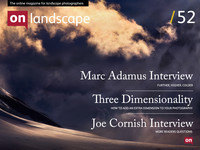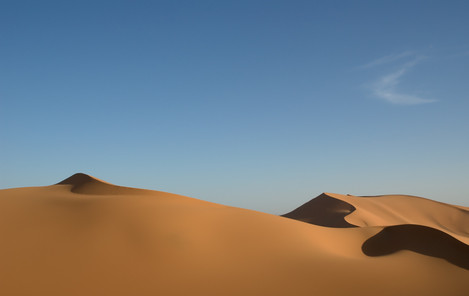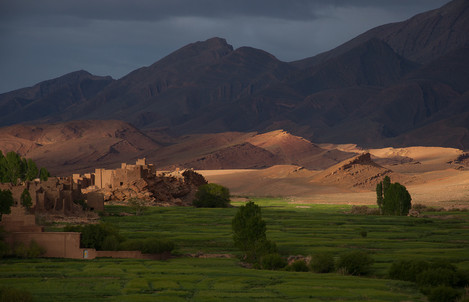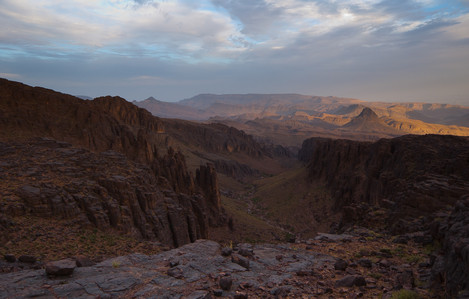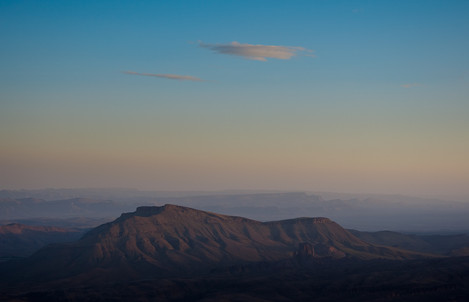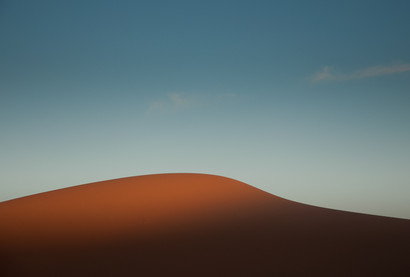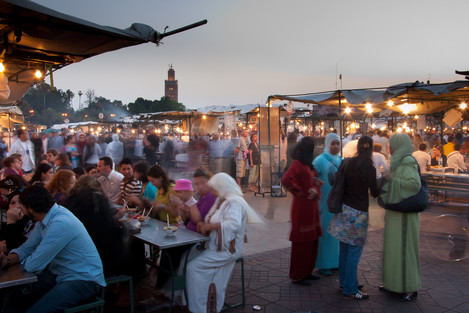An Overview from an Experienced Tour Leader
Morocco is a country that rewards an itinerant photographer. I have been going there for about 20 years, and each time I am not only excited by what I find in front of my camera, but my photography evolves as I am technically stretched by what I want to achieve creatively... and this is during repeated visits to the same relatively small area of the 'grand sud': the central High Atlas and Sahara.
In many ways I am glad that Morocco is poorly served by the world of the coffee table book (yes I know it is a pejorative term, but I do feel that they are often to blame for the copy-cat culture that I feel has plagued landscape photography during the last decade or so). When I arrive at a landscape in Morocco, I am usually completely ignorant of any other images that may have been made of it other than my own, and am therefore free to react to it without preconceptions. In fact, the most common reaction I have from clients that I have taken there on photographic tours over the last decade has been a rather stunned "I never realised how extraordinary it is here", and this is normally on about only day two or three of a 10 day trip.
The gateway to the south is Marrakesh One could easily spend a week here attempting to do photographic justice to the souks and the great square, the Djema el Fnaa. The square has recently been granted UNESCO world heritage site status as one of the most ancient continuously used open air theatres, and it is is symptomatic of Morocco as a whole that it performs this role for the local Moroccans just as much today as it has always. You must remember that Marrakesh was the first major city for traders from across the desert. They sold salt, gold, spices and slaves from hundreds of courtyarded caravanserais hidden within the souks (some of them remain untouched, but many have become boutique hotels). The traders had endured physical hardship, extortion and danger on the way, and now they found themselves cash rich in a strange and exotic land; we are only the latest of centuries of tourists, and Marrakesh carries on undaunted.
Immediately south of Marrakesh and tantalisingly close as you fly into the airport, are the often snow-capped peaks of the High Atlas Mountains, stronghold of the nomadic Berber people who live there today as they have done for centuries, herding goats, camels and donkeys and living in camel-hair tents and caves. During spring and autumn they are on the move looking for fresh grazing for their animals and these are the best times to venture off the tarmac and onto remote mountain tracks to find them, often camped close to the springs that they have to bring their livestock to at least once a day during their migrations. The mountains here are high, dry and barren. With the desert to the south, the north face of the atlas range steals any moisture left in the winds coming inland from the Mediterranean, leaving the southern slopes almost uninhabitably barren. Parched in summer and snowed in during winter.
Yet the Berbers still live here, with none of the trappings of western society, often barefoot, tattooed and in handwoven garments, barely a couple of hours drive from the film studios and international airport at Ouarzazate, but at the same time centuries apart. I have visited one troglodyte family almost every year for the last decade. The old man stays at the caves with the womenfolk, waited on by his great niece. We bring him a cone of sugar, a brick of tea and tales of the outside world, and as he makes us a tea brewed from mountain herbs, he looks out of the cave entrance from his favorite spot and tells us how cruel the weather has been that year, how deep the snow, how late the shearing.
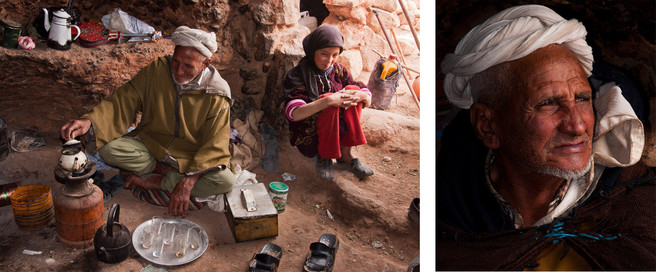 It is impossible to consider the landscape here without considering the Berbers. Each sparse tussock of scrub has been shaped by the grazing herds or will provide firewood for the nomads' cooking fires, and natural overhangs and rock strata provide solid foundations for rough stone animal enclosures for when the nomads pass and pitch camp for a few days. As the mountains have been shaped by the Berbers, so the Berbers' way of life has been shaped by the mountains, their textile pigments come from the coloured rock, the valleys, gorges and dry river beds are their pathways; the two are inextricably connected in a fine balance that has existed almost as long as man himself.
It is impossible to consider the landscape here without considering the Berbers. Each sparse tussock of scrub has been shaped by the grazing herds or will provide firewood for the nomads' cooking fires, and natural overhangs and rock strata provide solid foundations for rough stone animal enclosures for when the nomads pass and pitch camp for a few days. As the mountains have been shaped by the Berbers, so the Berbers' way of life has been shaped by the mountains, their textile pigments come from the coloured rock, the valleys, gorges and dry river beds are their pathways; the two are inextricably connected in a fine balance that has existed almost as long as man himself.
A little further south is the enigmatic Jbel Sahrho. I find these mountains unbelievably romantic. They are not as high as the atlas, but they border the desert and so are scoured by the dry winds from the south. The bare, exposed rock is a mix of black basalt, granite and sandstone, and every twist and upheaval of its volcanic past is visible in the twisted strata. Almost unknown, it was here that the might of the French colonial army failed to beat a clan of local Berbers, the Ait Atta, a defeat that sowed the seeds from the eventual French withdrawal from North Africa. And as I stand at the top of the range at sunset watching the earth’s shadow fill the gorges and stretch towards the desert in the south, filling the dust-laden sky with an unearthly green and purple haze, every evening provides a different light and every sunset casts a different shadow across a bizarre landscape of high plains, pillars and escarpments.
And finally the Sahara. Even though you can reach it (at a push) in a day from Northern Europe and the combined attractions of the Ouarzazate film studios and the dunes at Merzouga have made this part of the desert an anonymous star of hundreds of films and advertisements, the desert still works its magic. The tourist thing to do is to get out to the high dunes and sit on the top to watch the sunrise, but however corny it may seem, those hours before dawn as the starlight slowly melts into the ethereal glow of the pre-dawn on the sands, in complete and utter silence, is magical however often you experience it. Almost every time I have visited the desert I have had different weather, too. I have had a rain storm, another year I found the fickle lake at the foot of the dunes full of water and populated by a flock of flamingos. I have had fluffy white clouds, clear blue skies and crisp shadows, and I have had a sandstorm. The desert is never boring.
This year, I am running my spring tour to all my favourite places, and this year I am being joined by my good friend David Ward. It has been too long (about 8 years?) since we have done a trip together, and I am looking forward to playing devil's advocate immensely ;-)
The trip runs from 3rd May to 13th May, flies into and out of Marrakesh with the last couple of days spent in that great city, and is spent in 4 wheel drive vehicles to allow us access to the hinterland. My usual partners, Authentic Morocco, are providing logistical support and are handling bookings, so if you are interested, either contact them or me directly for more details.
If you would like to learn more about the trip you can visit the Authentic Morocco website.

